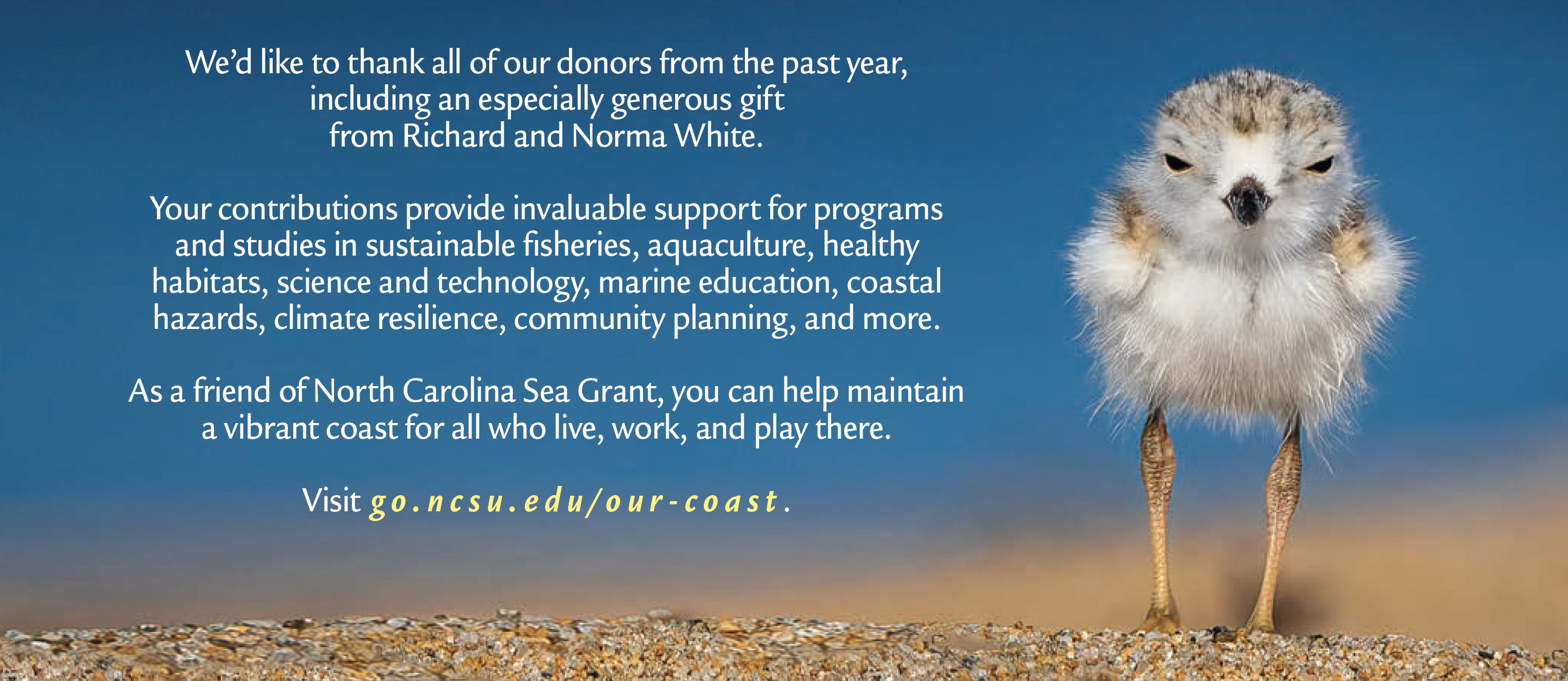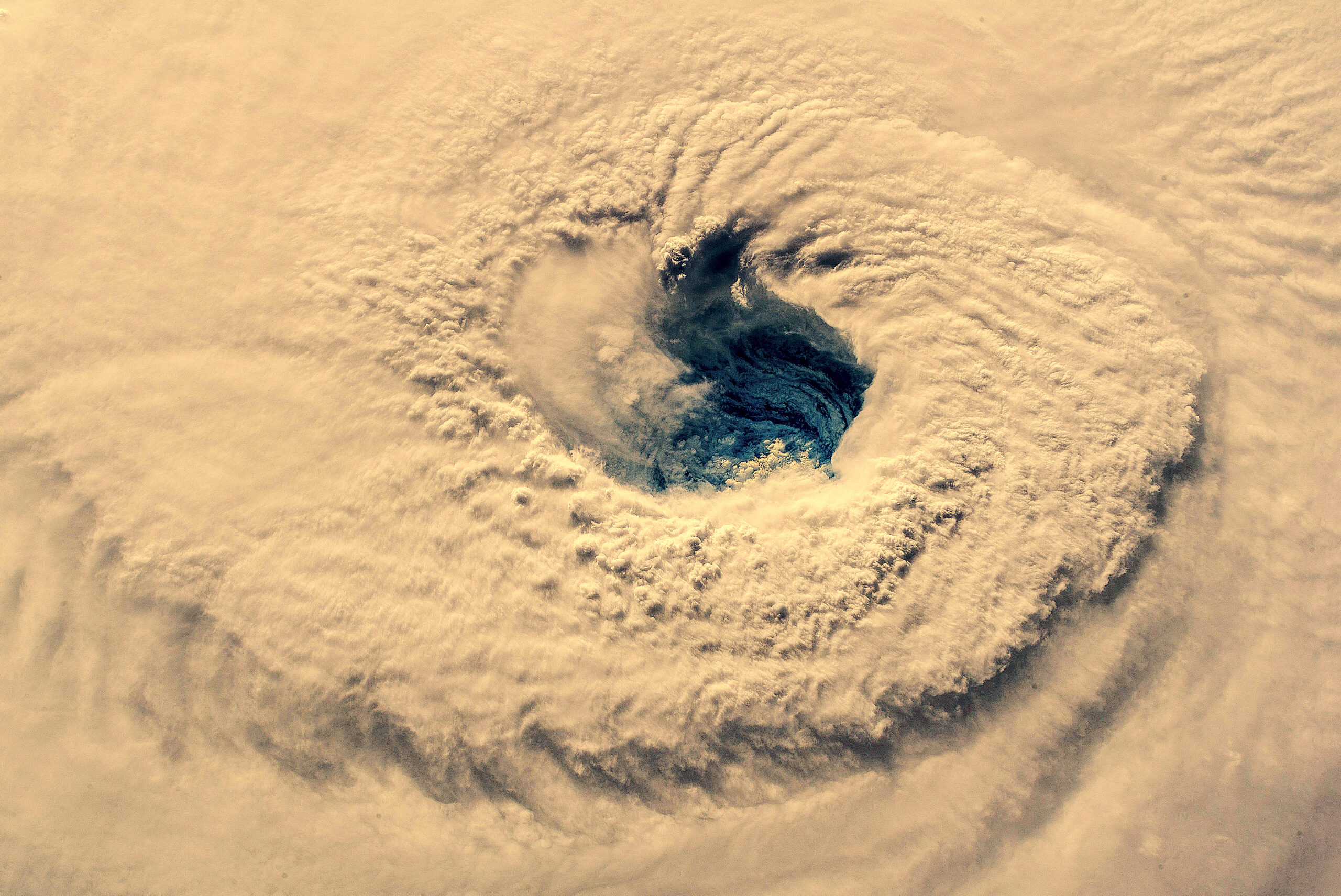A River of Plastics
New research reveals the Neuse River Basin annually delivers an estimated 230 billion particles of plastic to the Pamlico Sound.
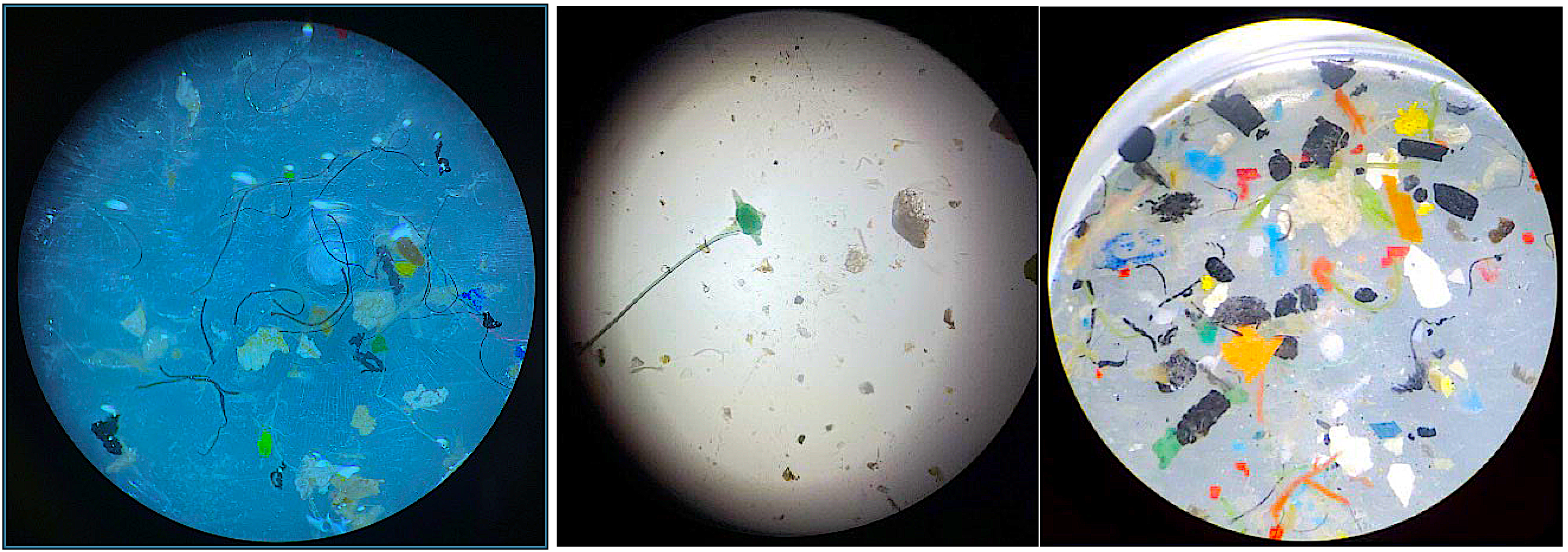
Plastics make up an overwhelming majority of all marine debris. This debris originates from mismanaged waste, fishing gear, and the manufacture of products that include clothing and cosmetics. About 13 million metric tons of plastics end up in our oceans every year.
Rivers supply most of the plastics in coastal environments, which can have adverse impacts. Birds and marine mammals can consume or become entangled in debris. Larger plastics can obstruct an animal’s digestive tract, eventually even leading to death. Chemicals on surface plastic also can be toxic and accumulate up the food chain.
Where does plastic end up?
Plastics do not degrade quickly in the aquatic environment, rather they break into microplastics — pieces smaller than 5mm (1/5 inch) — which persist and pose a threat to marine plants and animals. Sea life often mistakes colorful plastic particles for food. Scientists have found plastic particles in sea turtles, whales, sea birds, and other organisms.
Microplastics also accumulate in the fish, crabs, and oysters that humans consume.
Is any environment totally free of plastics?
Recent research has revealed plastics are widespread in our natural environment, and microplastics are present on every continent and in some of the most pristine areas of the planet.
When it rains, litter on streets, sidewalks, and ditches washes through storm drains into our waterways. Plastic carried by North Carolina’s coastal-draining rivers flows into our sounds and estuaries and can enter the ocean through inlets between barrier islands.
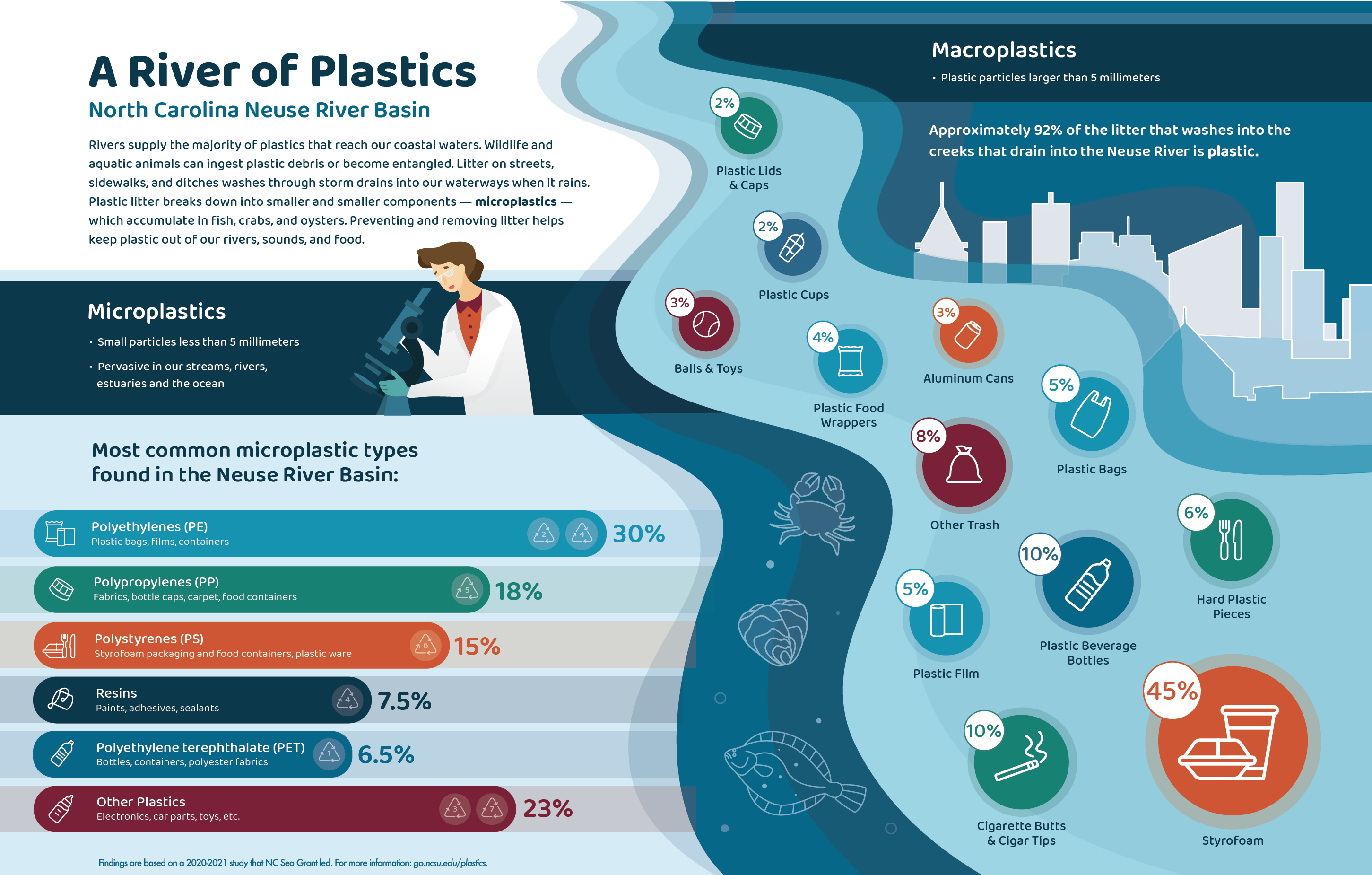
Download full size infographic and fact sheet (PDF).
How much plastic is in our rivers, sounds, and estuaries — and where is it coming from?
To better understand plastic pollution in North Carolina’s waterways, NC State University and North Carolina Sea Grant studied streams in the Neuse River Basin using a variety of field-sampling methods.
The Neuse River originates in the Piedmont and flows into the Albemarle-Pamlico Sound, the second largest estuary in the country. This estuary includes an interconnected network of sounds that provide important habitat for finfish, shellfish, and marine mammals, as well as serving as a vital recreational area for residents and visitors.
Our study was the first to sample microplastics in North Carolina’s freshwater rivers and streams, focusing on 15 locations throughout the Neuse River Basin, from Wake County to Craven County. We evaluated the presence of microplastic particles by trawling for several minutes using a net with 335-micron openings (about the size of a small grain of sand) and by bailing 100 liters (about 26.4 gallons) of water through a 64-micron mesh opening (roughly the thickness of a human hair).
What about larger pieces of plastic?
We also sampled larger plastic debris (“macroplastics”) and other litter at streams in the upper portion of the Neuse River Basin using three methods.
First, we made regular collections from rectangular grids that included the channel and floodplain at seven streams under a range of conditions.
Second, we deployed a trash capture device during stormflows at two highly urbanized streams.
Third, from bridges at two large tributaries and from a small, highly-urban stream in Raleigh, we observed and counted floating trash during stormflow events.
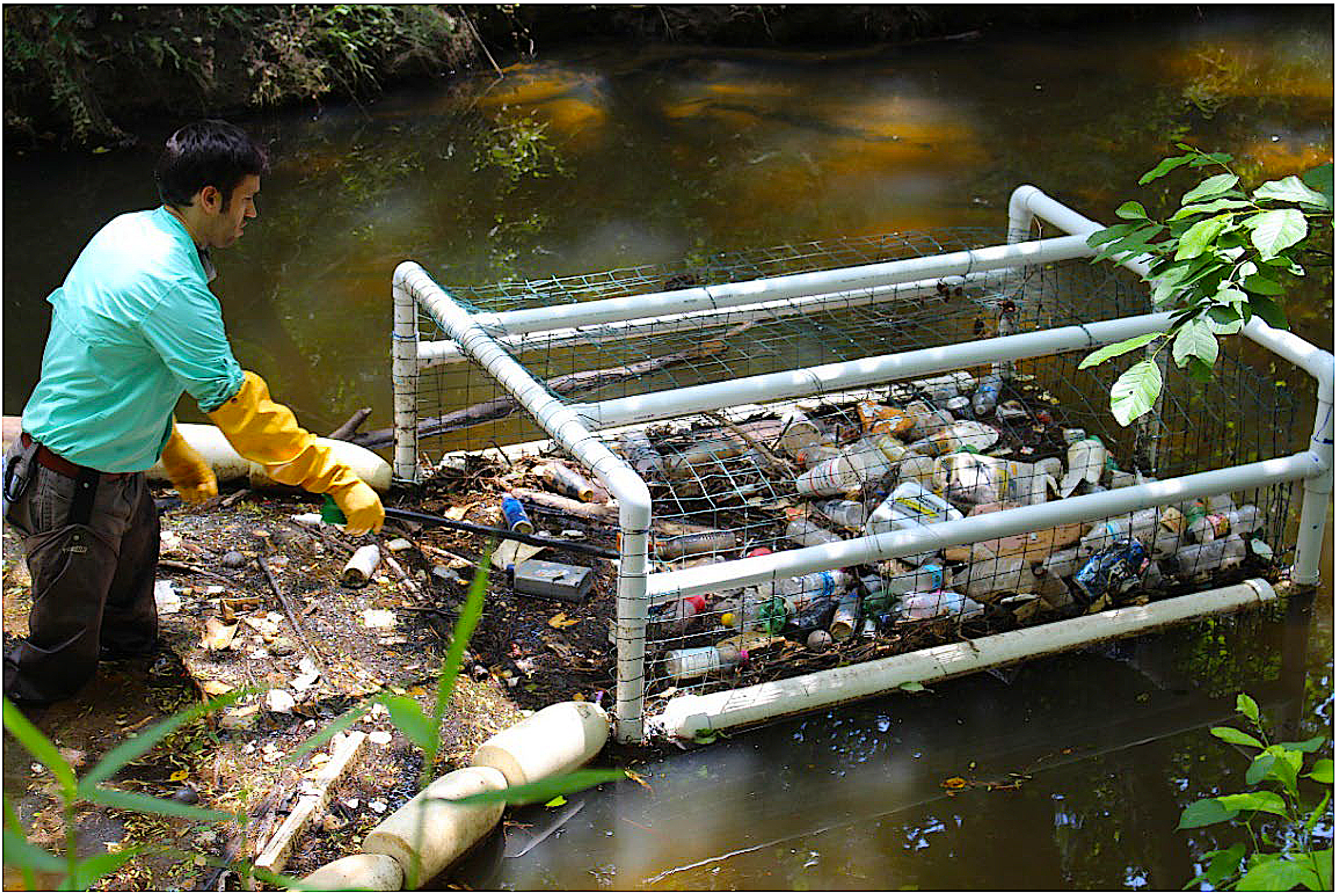
What do the findings reveal?
Microplastics
- Microplastic particles were at all 15 locations.
- The most common types were polyethylene and polystyrene.
- Concentrations of microplastics varied widely across seasons and flow conditions, with the highest concentrations in catchments in the most developed areas during stormflow.
- Concentrations of microplastics identified using 64-micron mesh were on average 170 times higher than with the 335-micron net, indicating a substantial increase in concentrations as plastics break into smaller and smaller pieces.
- We estimate that about 670 million microplastic particles larger than 335 microns enter the Pamlico Sound from the Neuse River Basin each year. For microplastics larger than 64 microns, that estimate is about 230 billion particles per year.
Macroplastics
- Over 95% of the observed floating trash was plastic. Plastic also dominated the litter captured with the trash trap. Styrofoam pieces were the most common type of litter we observed with these two sampling methods.
- Grid samples contained a more diverse trash profile, but plastics still comprised about 74% of all samples.
- Urban streams produced much higher counts of trash and macroplastics than other locations.
- The most common types of macroplastics were similar to the most common types of microplastics that we found.
- We estimate a total annual load of 120,250 pieces of floating trash in just Marsh Creek in Raleigh.
- During storms, only a small fraction of trash is deposited on the floodplain or channel bed, or entangled in debris in the riparian corridor. Rather, high stormflows commonly transport plastics downstream, likely into the mainstem of the Neuse River, where plastics can continue to move into the Pamlico Sound and possibly into the ocean.
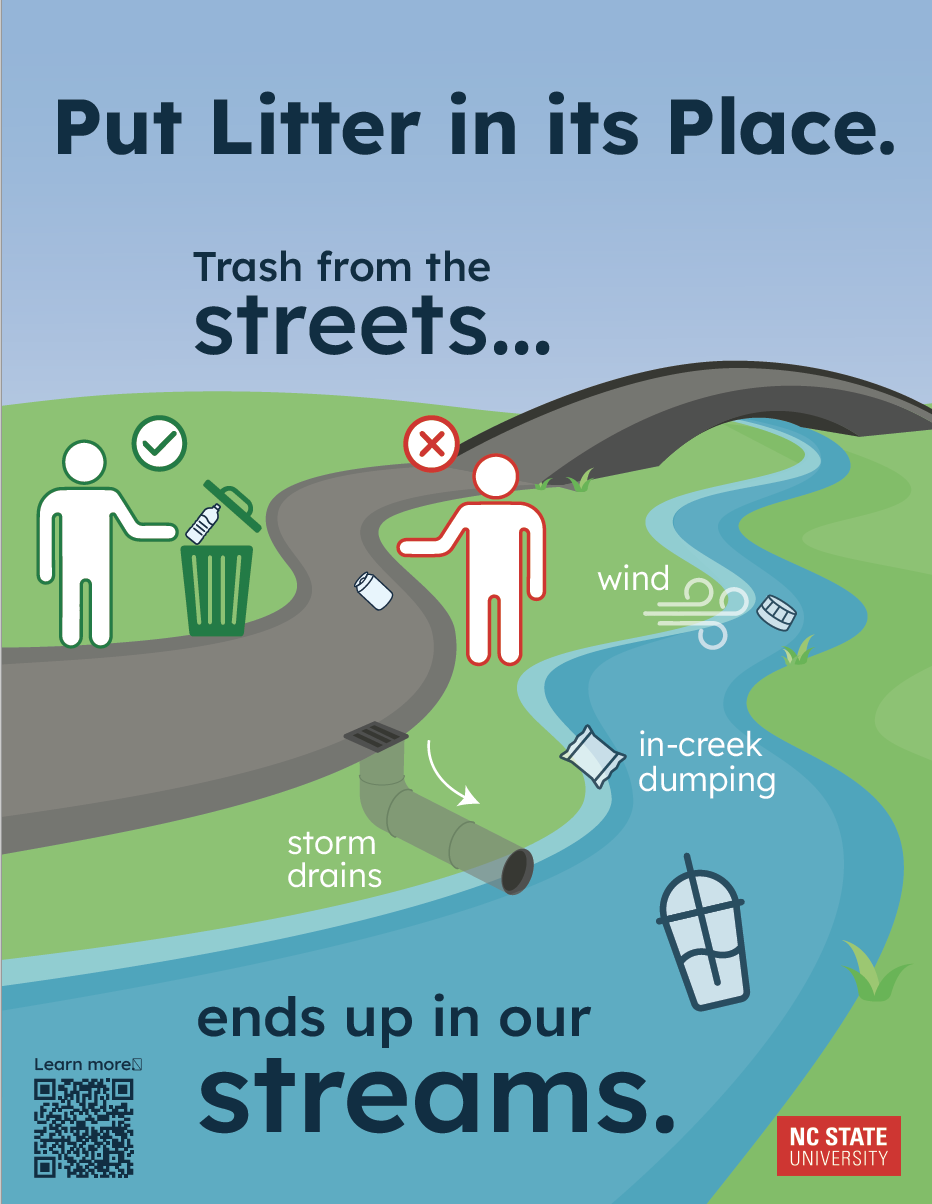
How can we prevent plastics from entering waterways?
Our results confirm the widespread presence of plastics and highlight the diffculty in removing them from our waterways. But we can take these steps to prevent new plastic pollution from reaching our streams:
- Properly dispose of unwanted materials.
- Make sure outdoor trash bins do not overflow.
- Don’t let trash blow out of your truck bed.
- Organize and participate in neighborhood, roadside, and waterway clean ups.
- Select biodegradable packaging when available.
- Use reusable glass, metal, or cloth, instead of plastic bottles, bags, and storage containers.
Download the Put Litter in its Place infographic.
more
Engaging Partners to Evaluate Plastics Loading to the Pamlico Sound from Urban and Rural Lands via the Neuse River in North Carolina, prepared for National Sea Grant College Program’s Marine Debris Program.
“Microplastic Distribution and Characteristics Across a Large River Basin: Insights from the Neuse River in North Carolina, USA,” in Science of the Total Environment. See: https://www.sciencedirect.com/science/article/pii/S0048969723015565?via%3Dihub.
BARBARA DOLL and GLORIA PUTNAM are North Carolina Sea Grant extension specialists. Doll also is on faculty at NC State University’s Department of Biological and Agricultural Engineering, where JACK KURKI-FOX is a research associate.
- Categories:
